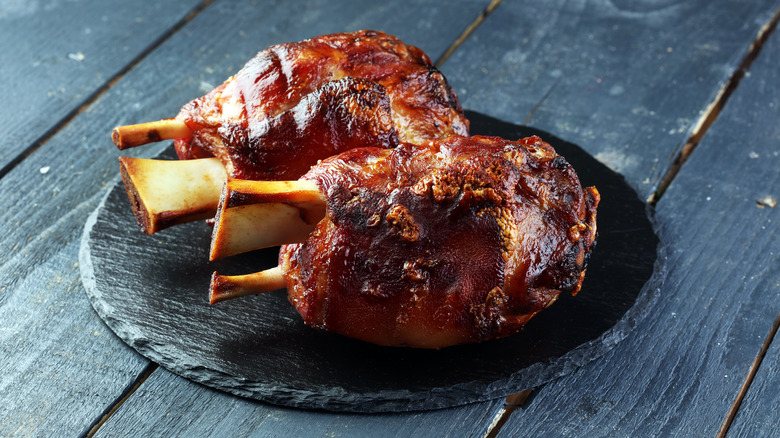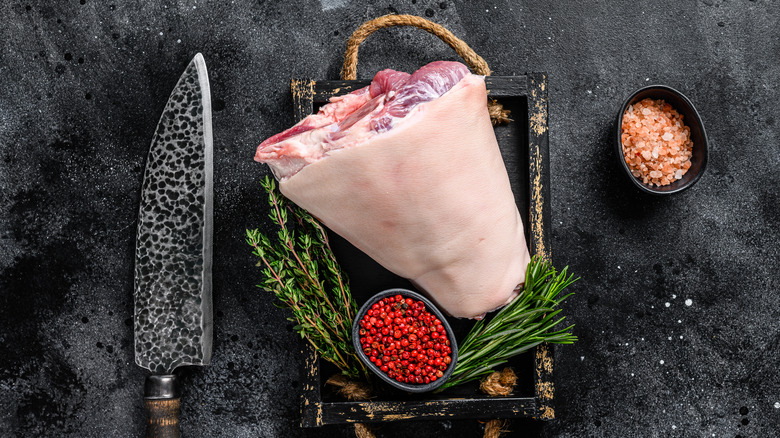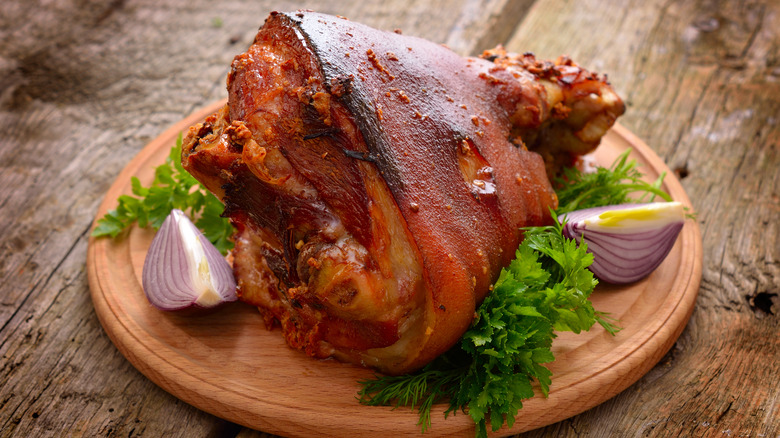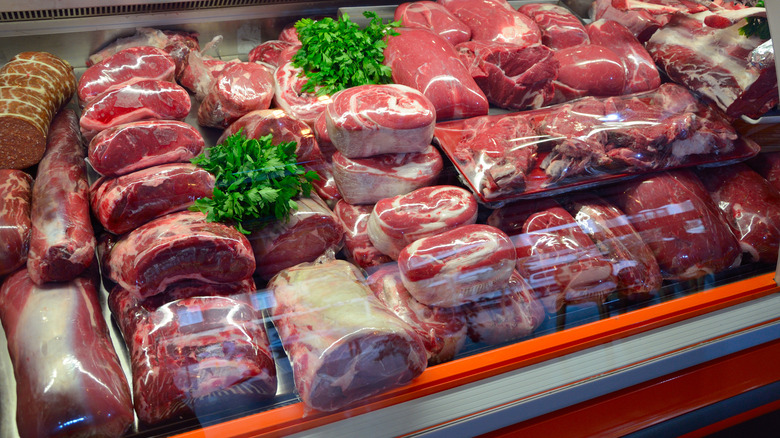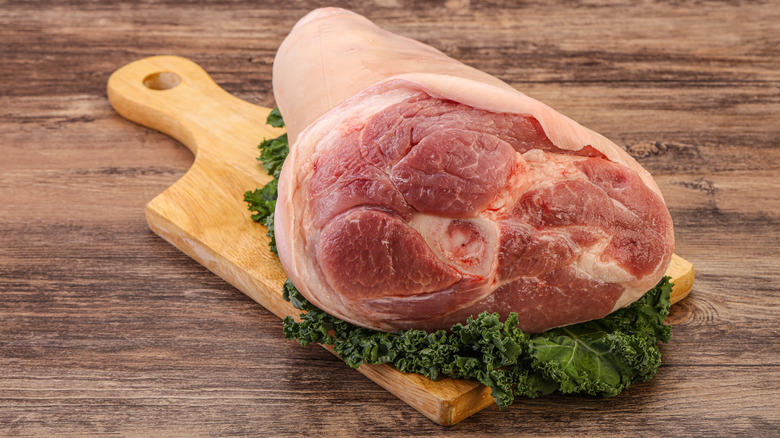What Is A Ham Hock And How Do You Use It?
Have you ever tried a ham hock? If you've eaten baked beans or collard greens, you've probably at least tasted the essence of this smoky, meaty part of the pig that's often used for flavoring soups, stocks, and other long-cooking dishes.
Also called pork knuckles, ham hocks are cut from the pig from where the foot was attached to the animal's leg (via Pioneer Woman). Somewhat short and quite thick, a ham hock is basically a section of bone covered in a small amount of meat and capped with a substantial layer of fat and skin. Because this is a cut that doesn't have a ton of meat on it, and has quite a bit of connective tissue and collagen, it's not considered a prime cut, and is quite inexpensive compared to the luxury parts of a pig such as chops and loins (via Southern Living). But with the right cooking technique and a lot of patience, ham hocks can bring a deeply meaty, smoky flavor to dishes. Let's take a closer look at this ingredient, and how to use it.
What is a ham hock?
Ham hocks are the extreme shank end of the leg bone and are cut from all four legs of the pig (via Southern Living). Then, the hocks are typically cured with salt before being smoked, and then packaged and sold, usually in pairs. Due to the salting and smoking process — exactly how pork belly is prepared to make bacon — ham hocks take on a delectable bacon-like taste that is traditionally used to infuse flavor into long-simmering dishes such as beans, collard greens, and potato soup, Southern Living explains.
Because of all the connective tissue and fat, ham hocks require long cooking times, but will reward the patient chef with tender, falling-apart meat and soft fat that's full of porky flavor. When cooking with them, just be conscious of how salty they are, and go light on the seasoning in the rest of your dish.
How to cook with ham hocks
Ham hocks have a strong, distinctive porky flavor, but they are actually quite versatile, lending their richness to a variety of dishes. The most basic way to cook with ham hocks is to slip one or two into any long-cooking dish that you want to infuse with bacon-y flavor. Some dishes that typically include ham hocks are Southern-style collard greens, black-eyed peas, and potato soup. If you're making a stock or broth and have a ham hock lying around, it's a great idea to toss one in for some extra depth of flavor.
In central and eastern Europe, ham hocks often take center stage in dishes. In the southern German region known as Bavaria, a dish called schweinshaxe takes fresh, uncured ham hocks and roasts them until crispy, serving them alongside sauerkraut and German potato salad (via Plated Cravings). In Austria, a similar dish called stelze is a popular menu option at the country's sprawling beer halls (via Strudel & Schnitzel).
Where to buy ham hocks
Larger grocery stores such as Kroger and Walmart will definitely carry ham hocks, where they can be found either at the butcher counter or among the cold cuts. These ham hocks are likely to be the salted and smoked variety, which have a longer shelf life (via Culinary Career). If you're looking for fresh ham hocks, perhaps to prepare in the Eastern European styles mentioned above, definitely take a trip to your local butcher, who is more likely to stock them.
Because they are not considered as desirable a cut of meat as other parts of the pig such as chops and loins, ham hocks are extremely affordable — MyRecipes says you can expect to pay less than $3 per pound for them.
Once you get your ham hocks home, if you don't use them immediately, the smoked variety will keep unopened in the fridge for two weeks and probably longer, since they are cured in salt (via eHow). Fresh ham hocks need to be refrigerated and used within one week, while both cured and uncured ham hocks will keep in the freezer indefinitely.
Nutritional information for ham hocks
Since ham hocks are a fatty piece of meat covered in plenty of skin, it won't come as a surprise to hear that they are relatively high in (delicious!) fat and calories. According to Smithfield, a four-ounce serving of ham hock contains 360 calories, 25 grams of fat including 9 grams of saturated fat, and 120 milligrams of cholesterol. There's a substantial amount of protein per serving, about 30 grams, as well as a decent amount of iron, about 10% of our daily allowance.
The whopper is really the sodium content of cured ham hocks — they contain 970 milligrams of sodium, or 40% of our daily allowance. When cooking with cured ham hocks, make sure to use a light hand salting the rest of your dish and taste as you go, so that you end up with a perfectly porky — but not super-salty — end product.
